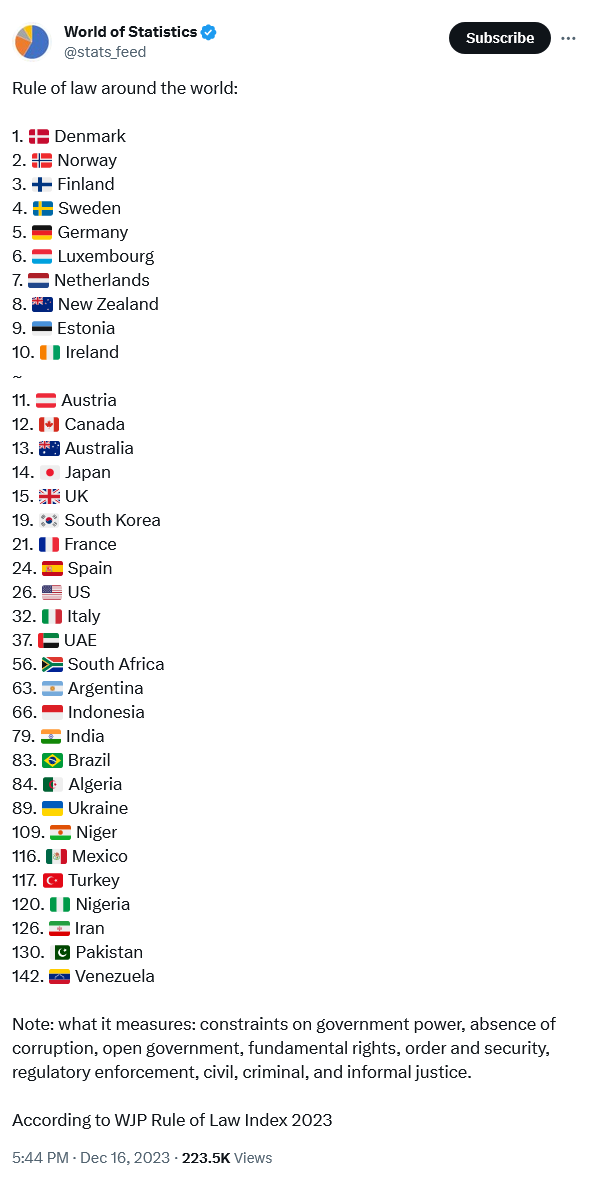SIFC: Fragile
Foundations, Bold Promises
Published in ParadigmShift on January 11, 2025
The three-tier SIFC has turned out to be one of the most
vital building blocks in Pakistan’s revival strategy of the economy. As set up
to attract foreign investment, reform the bureaucratic structures, and foster
critical strategic initiatives, the SIFC is a positive development. However, it
is measured against political possibility, civil-military relations, and the
systemic vices of governance, which are capable of setting in to frustrate its
results.
Achievements
of SIFC: A Glimpse of Progress
It is evident that the SIFC has made significant, realistic
improvements in terms of the following factors: Thus, core inflation fell
significantly and reached 4.9% in November 2024, being the lowest index since
2018 (PBS). Fiscally transformative measures are focused on reducing the
inflation to 7% within the next five years, although the growth had been
estimated from 3.6% to 5.5% in the next three years (MoF P, 2024 Economic
Outlook). Then, the debt-to-GDP projection is to reach 2025–68, 6% and 2027–66,
6% Such words from the IMF reflect financial stability.
Firstly, the fact that the government has revived the
construction of the 1,100-TEU containership at the Karachi Shipyard clearly
indicates revival of maritime capabilities in the country. This $24.75 million
plan is in line with the SIFC’s general intention towards industrialisation and
job generation and expanding the blue economy (Karachi Shipyard &
Engineering Works).
Governance
Challenges and Structural Criticism
Nevertheless, these accomplishments remain masked by the
miscues of systemic inefficiencies and governance issues that threaten the
SIFC’s future solvency. A centralised decision-making format is criticised in
the council due to adverse impacts that can limit provincial democracy and
depower democratic policies (Dawn Editorial Board).
For instance, delays in implementing projects like the Siah
Dik Copper Project in Baluchistan are evidence of the fact that bureaucratic
issues that are unresolved As per info available in Balochistan Mining Updates,
2024. Moreover, a lack of disclosure and weak interaction with users and other
stakeholders complicates the assessment of the council in the context of the
stated goals and aspirations.
These concerns are compounded further by a reliance on
military management to oversee the process, which detractors have said could recreate
the role of the military in civilian life (HRW Report, 2024). The arrest of
former chief of spy agency Lt Gen Faiz Hameed and political instability
involving ex-Prime Minister Imran Khan is a manifestation of any civil-military
tension/conflict in South Asian countries, especially Pakistan, clearly-South
Asia from Al Jazeera News.
Lessons
from the Past: Dynastic Politics and Policy Inertia
Historically, political conditions in Pakistan have always
been problem-ridden with dynastic politics and politically fragmented
provinces, which have typically acted as barriers to any concrete reform.
Successive governments, both civilian and military, have struggled to implement
policies that transcend short-term political gains (Oxford University Press:
Governance in South Asia). These structural problems remain; this, for example,
can be seen in the failure to consistently implement past economic programs.
Again, it should build bipartisan support and guarantee that
its programs are beyond the influence of politics. As with promissory economic
projects as the Pakistan Steel Mills revival to date, political intervention
has proven to be a hard-core break of political goals due to other political
interferences, as evidenced by the Economic Research Institute of Pakistan.
The
Role of ECC and Private Sector Engagement
Many development projects, supplementary grants, and
subsidies by the ECC have been made more easily in response to SIFC’s demands.
These consist of the creation of the Siah Dik Copper Project and the reorganisation
of the Pakistan Revenue Automation Limited (PRAL) (Minister of Finance). These
policies have the objective of revitalising segments like mining, construction,
and IT so as to have an efficient, diversified economy.
Council partnership with the private sector thus supports its
other facet. The existence of synergistic public-private partnerships is
demonstrated by the work that the government can do with the help of
organisations such as the Rawalpindi Chamber of Commerce and Industry (RCCI) in
matters of infrastructure and taxes (RCCI Official Portal). Examples, including
the Rawalpindi Ring Road and the government drive to advance the use of Real
Estate Investment Trusts (REITs), indicate the continuous emphasis on
sustainable urban development and investment (Urban Unit Punjab).
International
Models and Future Prospects
The SIFC could learn from many developed countries on how
they got to where they are now, e.g., Malaysia’s Economic Planning Unit,
Singapore Economic Development Board, among others. These models consider
openness, efficiency of the agencies’ interaction, as well as effective
cooperation with the private sector as key advantages (World Bank Development
Reports).
For the SIFC to record similar achievements, then it requires
working for an increase in transparency and accountability. There is a need to
develop the independent audit structures, involve different stakeholders, and
decentralise the decision-making in order to ensure that the council's
activities correspond to the national and provincial intentions (Transparency
International Pakistan).
Moving
Forward: A Balanced Approach
Complaints made on dynastic politicians and military
encroachment in politics should not blind society from the ability of the
council to foster growth of the economy. By adopting a balanced approach that
combines strategic planning with inclusive policymaking, the SIFC can serve as
a catalyst for transformative change (UNDP: Inclusive Development).
Between the economic rebirth and operation of Pakistan and
stagnation, only heads-and-shoulders expertise of this council exists in the
soft art of managing high expectations and the realisable goals. This includes
a process of redesigning the system in order to identify the appropriate lines
of working, engagement of all the stakeholders involved, and using
international examples. Consequently, if these goals were to be realised, the
SIFC could possibly foster better economies and stability in the future.
Conclusion
The Special Investment Facilitation Council is a good chance
for the country to reboot its economy and to start moving forward again. So
far, it has implemented some measures, where such efforts provide hope of an
improvement. Addressing system issues and promoting a new governance model will
continue to be critical for the long-term success of the NDIS. While Pakistan
currently faces an uncertain future, the success of converting ambitious plans
into realistic projects will define the SIFC success.
References
- Pakistan Bureau of
Statistics (PBS): Core inflation data and
economic indicators.
- Ministry of Finance Pakistan (MoFP): 2024 Economic Outlook and fiscal reforms.
- International Monetary Fund (IMF): Debt-to-GDP projections and financial stability.
- Karachi Shipyard & Engineering Works: 1,100-TEU containership project details.
- Board of Investment Pakistan (BoI-Pakistan): Updates on foreign investment initiatives.
- Dawn Editorial Board:
Critique on SIFC’s governance and decision-making.
- Balochistan Mining Updates (2024): Project delays and bureaucratic inefficiencies.
- Human Rights Watch Report (2024): Analysis of civil-military relations in Pakistan.
- Al Jazeera News (South Asia): Coverage on political instability in Pakistan.
- Oxford University Press:
Governance in South Asia - Insights on policy challenges.
- Economic Research Institute of Pakistan (ERIP): Case studies on political interventions.
- Rawalpindi Chamber of Commerce and Industry (RCCI): Public-private partnerships and infrastructure.
- Urban Unit Punjab: Projects
like Rawalpindi Ring Road and REITs development.
- World Bank Development Reports: Case studies on economic planning models.
- Transparency International Pakistan: Recommendations on transparency and accountability.
- United Nations
Development Programme (UNDP): Guidance on inclusive
development strategies.
Showcase of Published Articles by Syed Salman Mehdi
Explore my body of work, featuring articles published in renowned platforms across the globe. Delve into a range of topics, including geopolitics, social issues, and more. Below is a comprehensive list of my published articles.
Green Left Weekly 🌍
Moral Betrayal of Gaza Published in 2024, this piece explores the moral implications of global indifference towards Gaza’s plight.
Paradigm Shift 🕊️
Geopolitical Chess: Analyzing the Global Power Play A 2024 article dissecting the intricate strategies of global powers.
Sugarcane Production in Pakistan: Challenges and Opportunities Examining the socio-economic impact of Pakistan’s sugarcane industry in 2024.
Global Voices 🌐
A Reactive Approach: Examining Pakistan Government’s Measures in Response to Alleged Umrah Visa Abuse Published on December 22, 2024, this article evaluates Pakistan’s reactive policies to visa-related controversies.
CounterPunch 📰
Switzerland’s Burqa Ban: A Crossroads of Freedom, Identity, and Social Cohesion Published on January 3, 2025, this article navigates the complex socio-political dimensions of Switzerland’s burqa ban.
HumSub (English) ✍️
The Lost Children of Sindh: A Growing Horror A harrowing account of child trafficking in Sindh, published in 2024.
Labour Laws & Social Security Systems: The Dilemma of Forgotten People Highlighting systemic challenges faced by workers in 2024.
HumSub (Urdu) 🇵🇰
سال 2024 : انسانیت کے زوال کی داستان Reflecting on humanity’s decline in 2024.
معاشی زوال بذریعہ موروثی کمال Analyzing economic decline through hereditary politics in 2024.
مشرق وسطی اور کردوں کا مستقبل Delving into the future of Kurds in the Middle East, published in 2024.
About the Author 🖋️
Syed Salman Mehdi is a freelance writer and researcher, dedicated to uncovering nuanced perspectives on global and regional issues. With a flair for storytelling and a commitment to truth, he has contributed to leading platforms such as Green Left Weekly, CounterPunch, Paradigm Shift, and HumSub. Salman is passionate about sparking meaningful conversations through his work.
For freelance or ghostwriting enquiries, feel free to get in touch or visit my latest blog for updates and insights!











